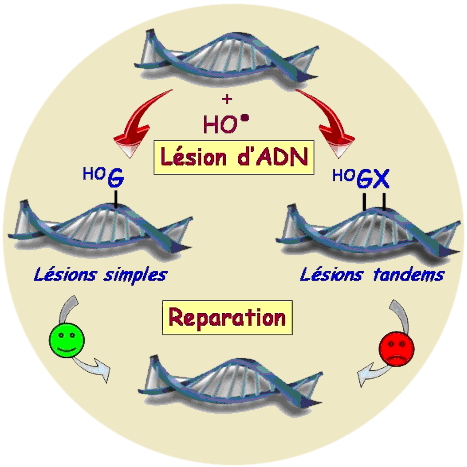Several tens of thousands of DNA lesions are produced per cell each day. They can affect many major functions of the cells and their progenies, thereby causing a series of pathologies: cancers, aging, cell death … The effects of reactive oxygen species (ROS – hydrogen peroxide, superoxide O2°- and hydroxyl radical
•OH) on DNA have been extensively studied, especially for
•OH, which is one of the most reactive compounds known in chemistry. We have determined that 95% of the lesions produced by ROS do not arise from the direct oxidation of a base by
•OH (figure, left part, G = guanine) but rather from mechanisms taking place in a two-steps process, combining
°OH and molecular oxygen (figure, right part, X = base next to guanine). The resulting damage is referred to as “tandem lesion”. A similar mechanism can also take place for two closely located bases not in direct vicinity of each other.
These two very efficient damaging processes result in an amplification of the number of lesions produced by the ROS, but were until now underestimated. Moreover, we have found that tandem lesions are repaired quite slowly, suggesting that this type of damage exhibits more deleterious properties than isolated lesions. And even low doses of radiation can induce their formation! Identifying the mechanism of formation and repair of these lesions will make possible a better understanding of the pathologies associated with DNA damage, and open the way to their cure and their prevention.
